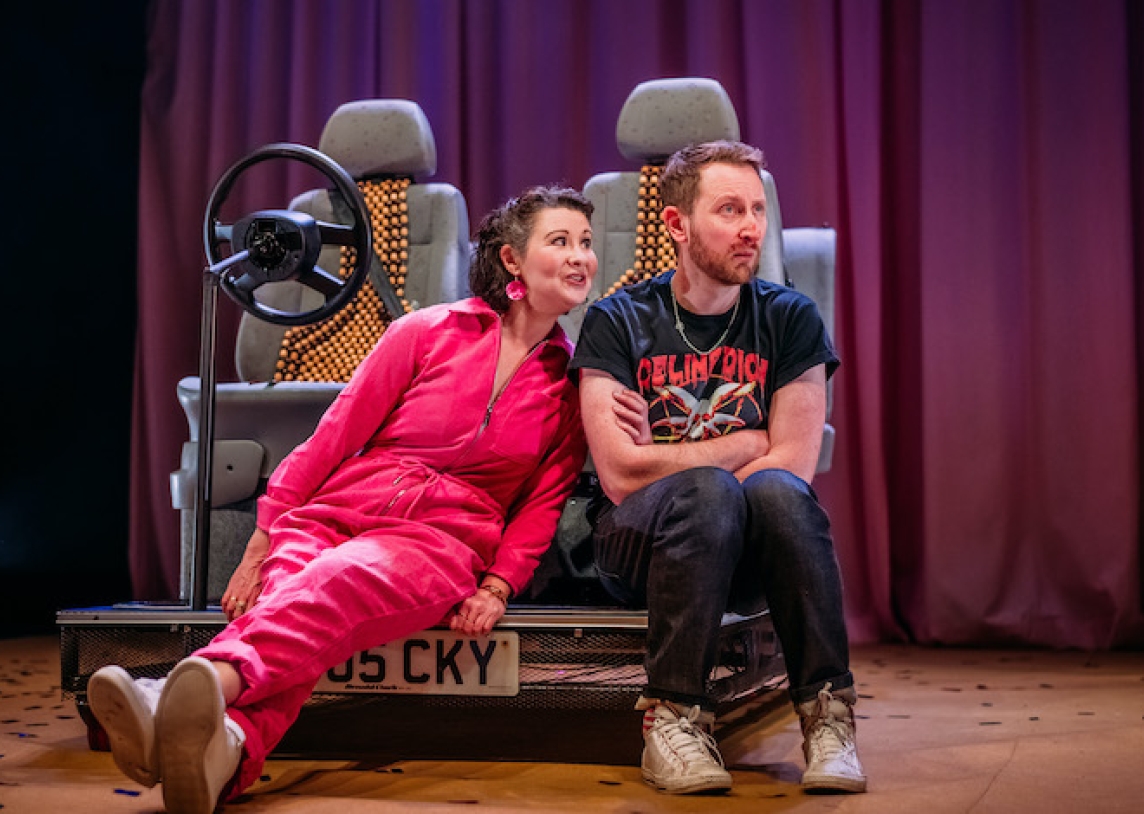News
Wilf
The Traverse, December 2021
Whether writer James Lay or director Gareth Nicholls intended it, the dynamic at the heart of Wilf – a gay romp through loneliness, reconciliation and auto-erotic fascination – emerges from an ancient preoccupation. The fascination with the animate, and its relationship to conscious beings, is manifested by protagonist Calvin (performed with verve and vigour by Michael Dylan) and his love affair with the titular Wilf: a car.
The sexual attraction between human and vehicle has been explored before – notably in JG Ballard’s Crash – but not with the broad humour and whiplash shifts of mood found in James Lay’s script. Indeed, Dylan’s Calvin drives most of the narrative with a furiously-paced monologue, describing random sexual encounters, memories of an absent mother, the escape from an abusive relationship and, ultimately, his transcendent lust for a car. Interruptions from Neil John Gibson (in a variety of roles) and Irene Allen (as his driving instructor-cum-therapist) provide context to Calvin’s road-trip, but it is the relationship between Calvin and Wilf that provides the heart of the drama.
Wilf is a contraption of wheels and chairs which, despite Calvin’s belief that he represents the freedom of the open road, is only mobile with the help of the cast. Calvin chases around Scotland’s countryside, finding sex but only loving the car: the climax of the action, when this love is consummated, provokes only guilt and discomfort in Calvin, who is finally compelled to confront his emotional anguish.
But it is in the relationship that a lively theme from puppetry’s history emerges. Like a marionette, or Mr Punch, or even a bunraku puppet, Wilf is given the illusion of agency and identity by the on-stage behaviour of the performers. And while Wilf is not as easily recognisable as a puppet in comparison to a marionette, it is the same lack of consciousness that allows Calvin to impose his fantasies onto the object.
The end to which this illusion is put – a sensitive but also hilarious reflection on alienation and desire – does hide the ontology of the production. However, it does follow the familiar form of a marionette show, in which the audience share a suspension of disbelief with the performer and the gap between the performance of the inanimate object, its apparent agency and its fundamental lack of consciousness are folded into an uncanny representation of life. Although Wilf is frequently funny and provocative, it also questions the way in which the inanimate – in this case a car, but also social media which influences and enables Calvin’s antics – impacts and responds to human intentions.
Wilf, then, argues for a puppetry that does not look like puppetry but nevertheless uses the dynamics of object manipulation to relate a story that has both ancient roots – how humans engage with their tools – and contemporary resonance. While other performance traditions are more immediate in the script and dramaturgy – it is story-telling with slapstick and a dash of the absurdist comedy – Wilf is an intriguing entry in the annals of Scottish puppetry.

